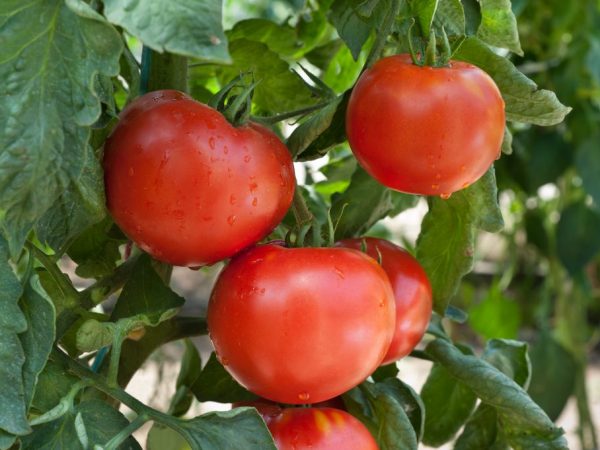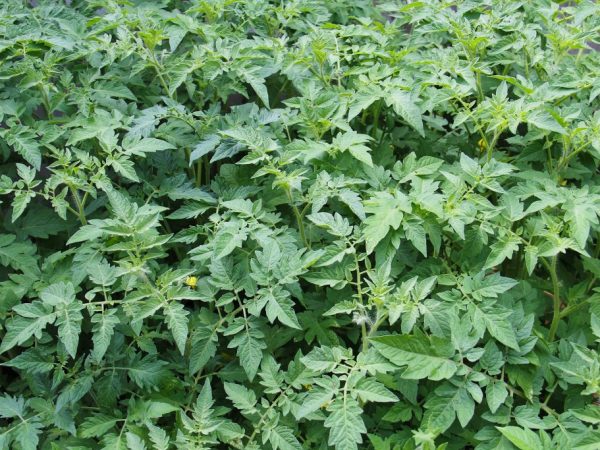Description and characteristics of Leopold tomatoes
Farmers in the middle zone of the country and those who live to the north will agree that early ripening varieties are needed to provide the market with fresh vegetables. This also applies to cucumbers and tomatoes and green crops. Consider one of these varieties - the Leopold tomato. It is notable for the fact that it begins to bear fruit when the time has not yet come for the mass destruction of plants by viruses and fungal diseases.

Description and characteristics of Leopold tomatoes
Another important feature of the Leopold tomato variety is that it is very unpretentious to care for. This makes it a desirable plant for beginner growers. Even if you are not very versed in agricultural technology and do not strictly follow the recommendations for growing. The Leopold tomato will yield a good harvest, suitable for canning and fresh consumption.
Characteristics of the variety
When you are going to start growing Leopold tomato, you first need to familiarize yourself with its features, such as characteristics and conditions of minimum care. Consider the advantages that the Leopold tomato has.
- An early ripe variety that allows for early harvests.
- Resistant to viruses and diseases.
- Recommended for planting both in open ground and in greenhouses.
- High yield and simultaneous yield of fruits.
In the final stage of ripening, the fruits acquire an almost perfect round shape. Each Leopold tomato weighs approximately 110 grams. They have a dense matte red skin. Therefore, tomatoes can perfectly tolerate long-distance transportation. Also, they are not subject to squeezing during long-term storage.
The Leopold variety is a hybrid tomato, which means that its seeds are not suitable for further cultivation.
You can collect them and sow them next year, but the plant will not give the yield that the tomato Leopold f1 gave. Therefore, it is better to grow a hybrid, get tomatoes and use the fruits for their intended purpose. It can be homemade preparations for the winter, use for salads and preparation of second courses, as well as juices and mixed cocktails.
The fruit has a very spicy taste that tomato lovers will appreciate. The pulp is deep red, pleasant sweet taste with hints of sour. When canning, the color of the tomato is preserved, the skin remains intact, without cracks. In cans, the blanks are not only tasty, but also look very compact. Each tomato, like a shiny round ball, touches another tomato, making up a whole bouquet with green spices.
Feature of the Leopold variety
When choosing a F1 hybrid for cultivation, you need to familiarize yourself with its features, because they will tell you how beneficial this variety will be, taking into account the temperature conditions and characteristics of the soil. The official description says that the variety is universal, but still it requires a mild temperature regime and a soil rich in minerals for growth and development.
The variety belongs to determinant crops, which means a certain height of the bush.When grown in the fields, the height will fluctuate within 80 - 90 centimeters. In the greenhouse, the tomato will grow a little more, but only by 15 or 20 cm. The compactness of the bush allows you to grow many plants in limited areas, for example, in mini greenhouses, the planting scheme can be viewed on the video from professional gardeners.

The variety is resistant to various diseases
Even under such conditions, the plants remain viable and are not damaged by dangerous viruses. They are resistant to both fusarium and tobacco mosaic and cladosporium. In fields open to all winds, the tomato is not afraid of sudden temperature changes, if it is not frost. Before them, the plant has time to give up the entire harvest.
Agrotechnics
Because the variety is early maturing, it can be grown in greenhouses in early spring. To do this, you must first prepare the seedlings. When purchasing seeds in winter, they need to be sown in mid or late February. It is recommended to soak the seed in a weak manganese solution before planting. You can also use growth stimulants, which will enable all seeds to sprout friendly.
After soaking in the solution for about 12 hours, the seeds are sown in specially prepared soil. It is desirable that it be light and disinfected before that, using the frying method. A layer of seeds is covered with a layer of soil, about a centimeter high. With deep planting, they can remain in the ground and not germinate. Covering the planting with foil, we create a greenhouse that has its own climate and humidity.
When seedlings appear, the film is removed, and the plants are transferred to the light, or additional lighting is turned on in the case of a large number of seedlings. After the first true leaves appear, the seedlings must be dived if they are in containers. When using individual peat tablets, young tomato plants can be left in them. Until the moment of planting in a permanent place, the seedlings must be fed three times. Solanaceous solutions are suitable for this.
Of course, you can not clearly follow the growing conditions, relying on your own experience. But it is better if the owner of a private garden strictly enforces the rules relating to this particular plant. Then he will surely receive a high harvest that matches his desires. In this case, more than 4 kg of fruits can be harvested from one plant. Reading and considering the reviews of farmers about the Leopold f1 tomato, you can be sure that this is a completely decent harvest.
Disembarkation to a permanent place
After 40 days from the date of emergence, you need to start planting seedlings. The beginning of April is the best time. The sun will provide enough light for the greenhouses and the seedlings will not stretch out trying to reach the light. Pre-hardened, seedlings are planted in neutral or slightly acidic soil. It should contain a sufficient amount of humus and an overestimated amount of magnesium.
It is optimal to plant about six plants per square meter. When forming bushes, it is good to leave 1 stem in greenhouses and 2 in the garden. In this case, it is advisable to get rid of the lower leaves, providing natural ventilation. In any growing conditions, watering is carried out at the root in the evening, protecting the plants from burns.
Culture care
As the stems grow, it is necessary to carry out pinching, removing excess branches that will not bear fruit. During the growing season, fertilizing is carried out with fertilizers containing all the necessary trace elements and minerals.
Further care for the Leopold tomato involves loosening for air access, mulching of near-stem areas and protection from pests. In the fields, these can be slugs and Colorado beetles.
Conclusion
Having opted for the Leopold f1 tomato, even a novice gardener can easily cope with its cultivation. Observing agricultural techniques and taking care of plants, you will get a lot of positive emotions.And, grateful for the care, the plant will give a sufficient harvest, which must be harvested on time. Use ripe fruits fresh, creating slicing masterpieces. And for blanks for future use, there are many recipes using which you will feast on tomatoes all winter.


